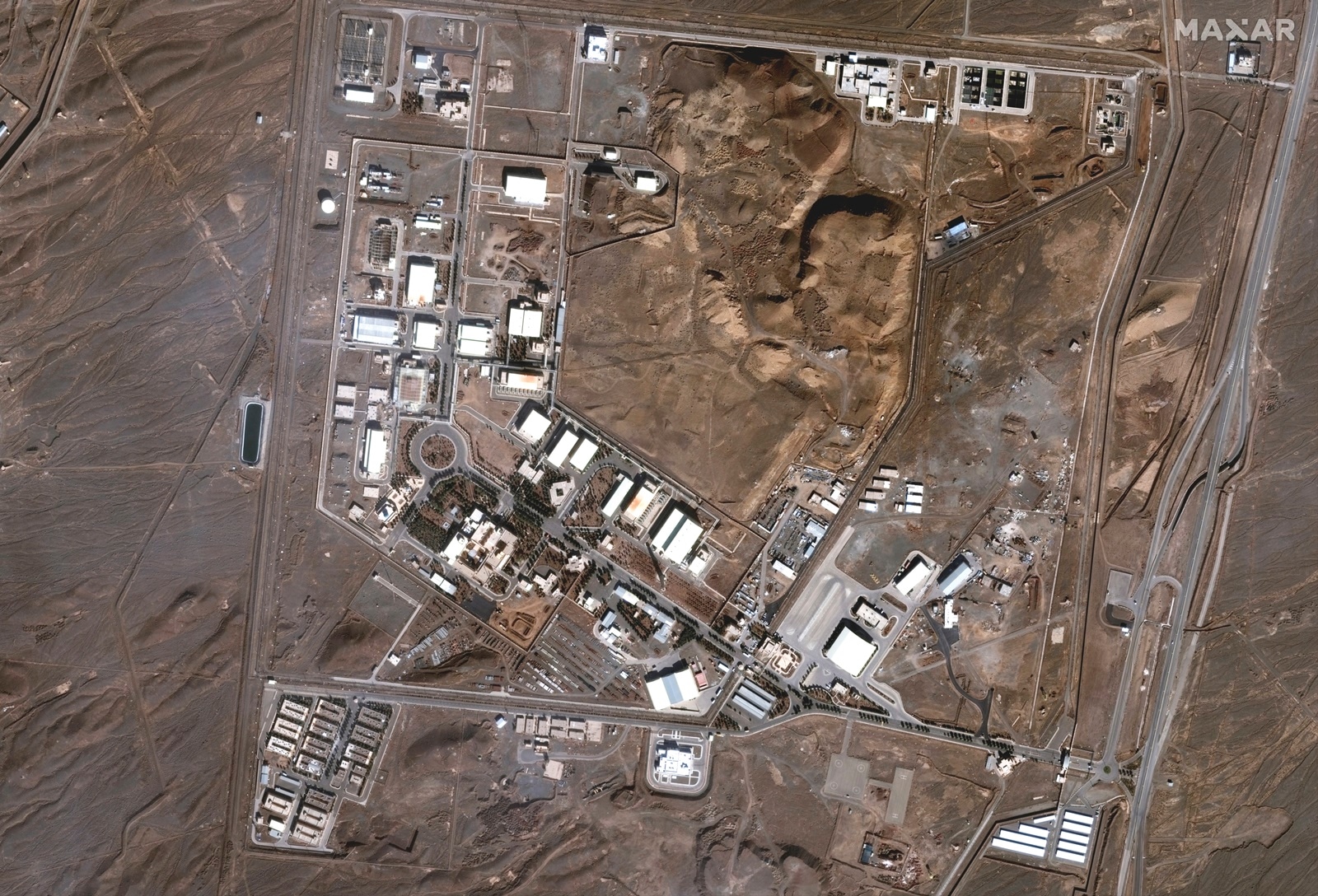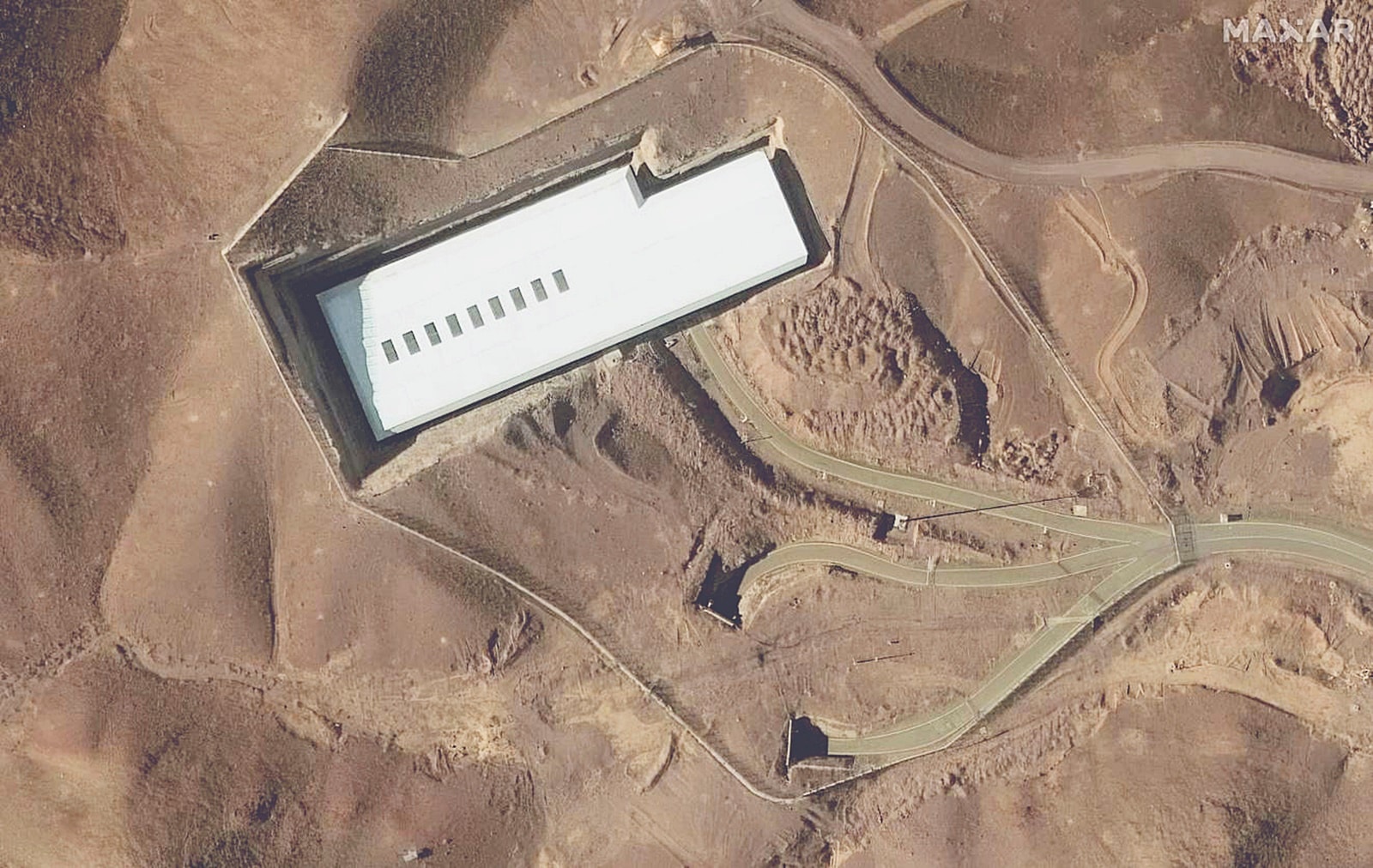A series of Israeli strikes on Iranian nuclear and military facilities on Friday marked a significant escalation in long-simmering tensions over Tehran’s nuclear ambitions. Israeli officials described the attack as a pre-emptive move to stop what they allege is Iran’s accelerating pursuit of nuclear weapons. Iran, for its part, has consistently maintained that its programme is for peaceful purposes.
In its attack on Friday, Israel said that it had hit the Natanz nuclear facility, among the 100 targets it struck across Iran. In a video announcing the military operation, Israeli Prime Minister Benjamin Netanyahu said the strikes hit Iran’s main enrichment site, the Natanz atomic facility, and targeted the country’s leading nuclear scientists. He said that Israel had also targeted Iran’s ballistic missile arsenal.
The assault came just a day after the International Atomic Energy Agency (IAEA) formally rebuked Iran for failing to cooperate with inspectors — its first censure of the country in two decades. In response, Tehran announced the establishment of a third uranium enrichment site and the installation of more advanced centrifuges.
Here’s a closer look at Iran’s key nuclear facilities, the history of its program, and how it reached this point:
The major nuclear sites
Natanz Enrichment Facility
Located roughly 135 miles southeast of Tehran, Natanz is Iran’s primary uranium enrichment site. Partially built underground to withstand airstrikes, the facility houses cascades of centrifuges used to enrich uranium more efficiently. Iran has also been tunnelling into a nearby mountain known as Kūh-e Kolang Gaz Lā (Pickax Mountain) — an effort seen as an attempt to fortify and expand the site. Natanz has been previously targeted by cyberattacks, most notably the Stuxnet virus and multiple acts of sabotage attributed to Israel.

 This satellite image provided by Maxar Technologies shows the Natanz nuclear facility in Iran on January 24, 2025. (Photo: AP)
This satellite image provided by Maxar Technologies shows the Natanz nuclear facility in Iran on January 24, 2025. (Photo: AP)
Fordo Enrichment Facility
Roughly 60 miles southwest of Tehran, Fordo is smaller than Natanz but more heavily fortified. Built deep beneath a mountain and protected by air defence systems, the facility has long been viewed as a hardened backup to Natanz.
Story continues below this ad
Fordo was constructed starting in 2007, but Iran only acknowledged its existence in 2009 after Western intelligence agencies revealed the project to the IAEA.
 This satellite image provided by Maxar Technologies shows the Fordo enrichment facility in Iran on January 24, 2025. (Photo: AP)
This satellite image provided by Maxar Technologies shows the Fordo enrichment facility in Iran on January 24, 2025. (Photo: AP)
Bushehr Nuclear Power Plant
Situated on the Persian Gulf about 465 miles south of Tehran, Bushehr is Iran’s only operational commercial nuclear power plant. Originally launched in the 1970s under the US-backed Shah, the project was halted after the 1979 Islamic Revolution and later completed by Russia.
Bushehr is fuelled by Russian-supplied uranium and remains under IAEA monitoring. Iran is constructing two additional reactors at the site.
Arak Heavy Water Reactor
Story continues below this ad
Located 155 miles southwest of Tehran, Arak is designed to use heavy water as a coolant, a process that can produce plutonium as a byproduct. While Iran has not pursued plutonium-based weapons, Arak theoretically offers a second pathway to a nuclear bomb.
As part of the 2015 nuclear deal with world powers, Iran agreed to redesign Arak to reduce proliferation risks.
Isfahan Nuclear Technology Centre
Roughly 215 miles southeast of Tehran, Isfahan is a hub of nuclear research and development. It hosts three Chinese-built research reactors and employs thousands of Iranian scientists. The site plays a crucial role in training and infrastructure for Iran’s atomic programme.
Tehran Research Reactor
Located at the headquarters of the Atomic Energy Organization of Iran, this reactor dates back to 1967 and was supplied by the United States during the Cold War under the “Atoms for Peace” initiative. Originally fuelled with weapons-grade uranium, it has since been modified to use low-enriched uranium to reduce proliferation concerns.
Story continues below this ad
 A list of the nuclear sites in Iran.
A list of the nuclear sites in Iran.
A brief history of Iran’s nuclear programme
Iran’s atomic ambitions began in 1957, when the United States helped launch its nuclear program under President Eisenhower’s Atoms for Peace initiative. By the 1970s, Iran began developing the reactors with support from the West but the pact ended after the Islamic revolution of 1979.
However, alarm bells started ringing in the early 2000s following the discovery of undeclared facilities at Natanz and Arak. As a signatory to the Nuclear Non-Proliferation Treaty (NPT), Iran is prohibited from developing nuclear weapons, but the IAEA and other countries in the West have expressed concerns over the opacity and scope of Iran’s activities.
In 2015, Iran agreed to the Joint Comprehensive Plan of Action (JCPOA) with the US and other world powers. The deal capped uranium enrichment at 3.67 per cent, limited Iran’s stockpile, banned certain types of centrifuges, and subjected its facilities to international inspections in exchange for economic sanctions relief.
Story continues below this ad
In 2018, then-President Donald Trump unilaterally withdrew the United States from the agreement, calling it “a disaster.” The US, as such, reimposed sweeping sanctions and in retaliation, Iran began scaling back its compliance, eventually resuming high-level enrichment.
By 2024, Iran was enriching uranium to 60 per cent purity, extremely close to the 90 per cent threshold needed for weapons-grade material. The country also deployed more advanced centrifuges and disabled IAEA surveillance equipment at key sites.
(With inputs from AP, The New York Times)

